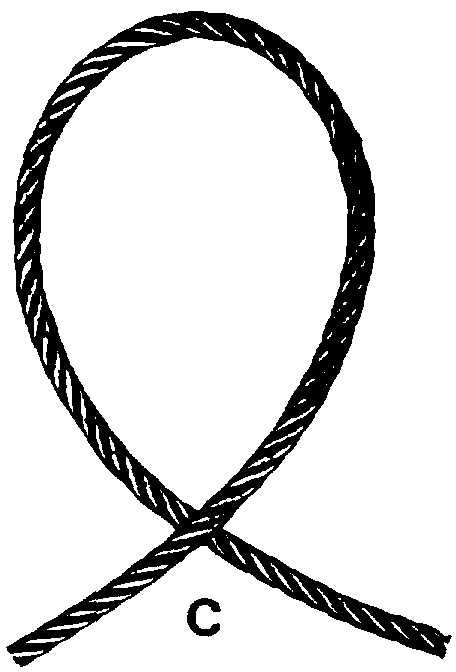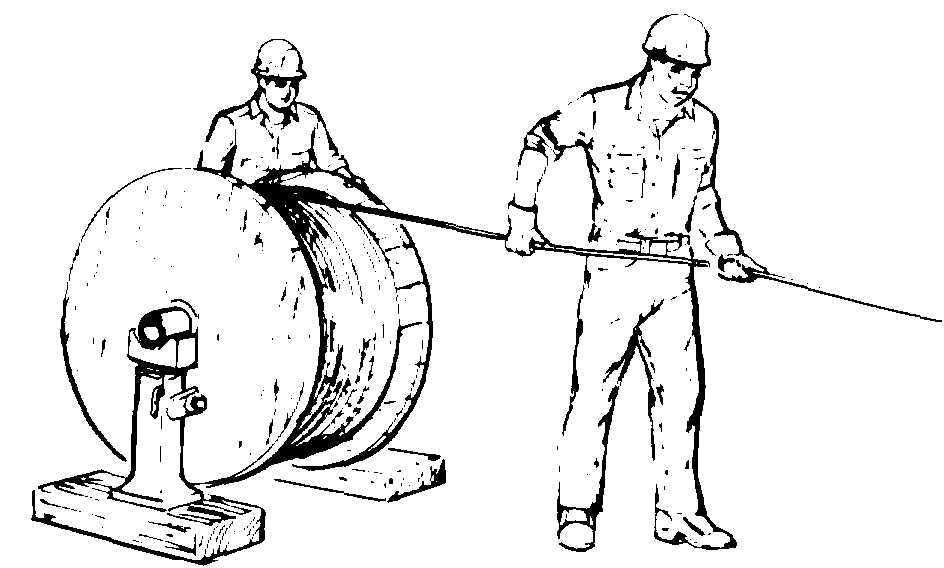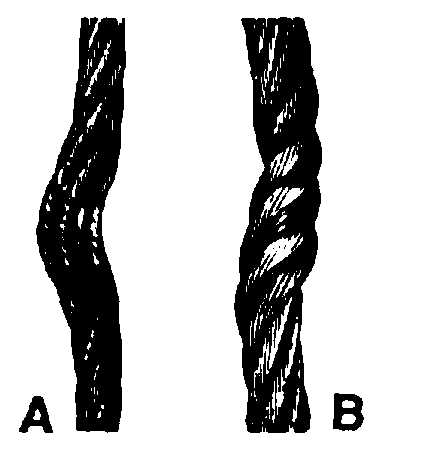TM5-3810-305-10
Unreeling and Uncoiling
Wire rope is shipped in cut lengths, either in
coils or on reels. Great care should be taken
when the rope is removed from the shipping
package since it can be permanently damaged by
improper unreeling or uncoiling. Looping the
rope over the head of the reel or pulling the rope
off a coil while it is lying on the ground, will
create loops in the line. Pulling on a loop will, at
the very least, produce imbalance in the rope and
may result in open or closed kinks (Figure 4-22).
Once a rope is kinked, the damage is permanent.
To correct this condition, the kink must be cut
out, and the shortened pieces used for some other
purpose.
Improper handling will help create open (A) or
closed (B) kinks. The open kink will open the
rope lay; the closed kink will close it. Do not
allow the rope to form a small loop. If, however,
a loop forms and is removed at the point shown
(C), a kink will be avoided. When the looped
rope is put under tension (D), a kink will form.
The rope is then permanently damaged and is of
little value.
Unwinding wire rope from its reel also requires
careful and proper procedure. There are three
methods to perform this procedure correctly:
1. Method A: The reel is mounted on a shaft
supported by two jacks or a roller payoff
(Figure 4-23). Since the reel is free to rotate,
the rope is pulled from the reel by a workman,
holding the rope end and walking away from
the reel as it unwinds. A braking device
should be employed so that the rope is kept
taut and the reel is restrained from over-
running the rope. This is necessary particu-
larly with powered de-reeling equipment.
Figure 4-22. Wire Rope Kinking
Figure 4-23. Mounted Unreeling
4-31







